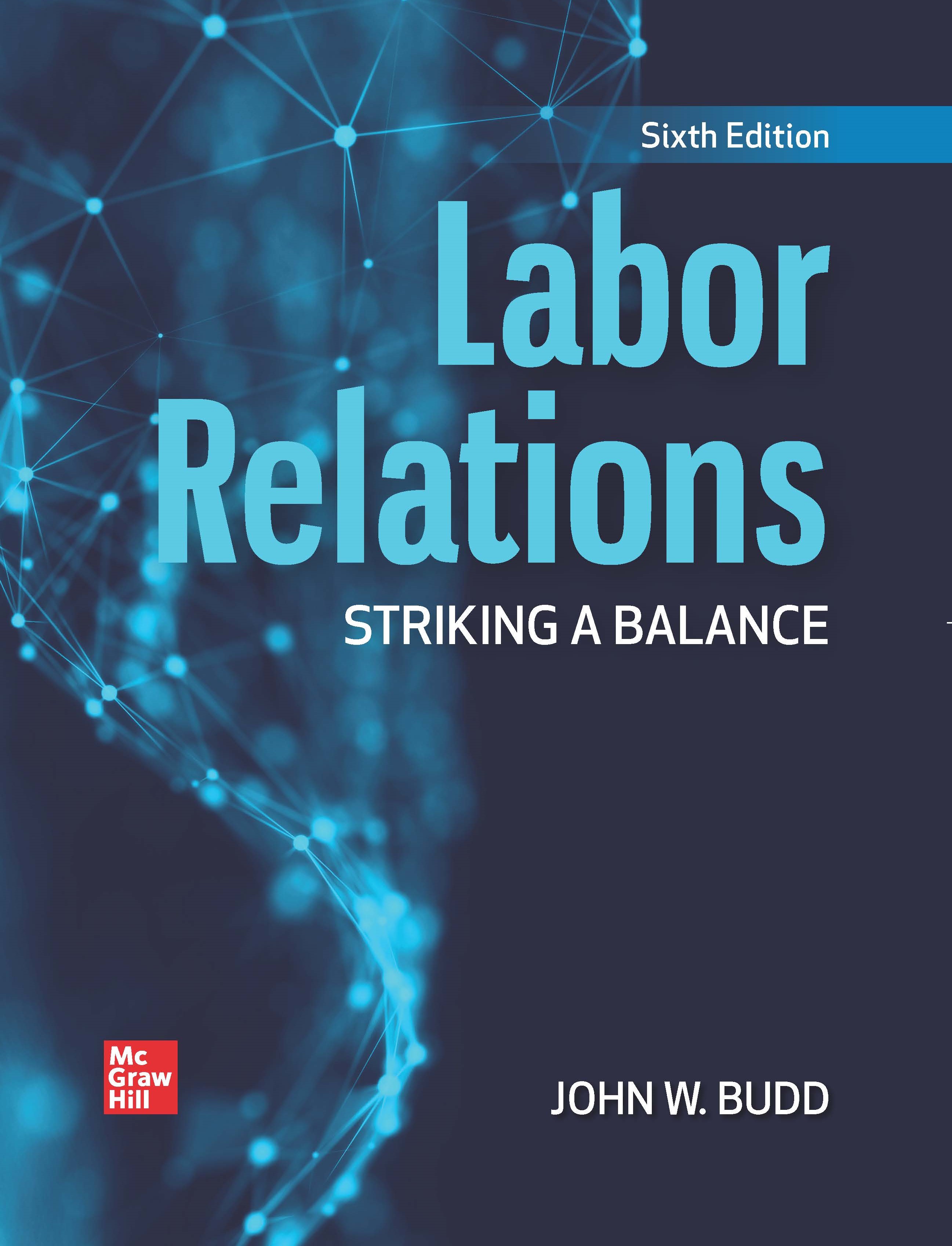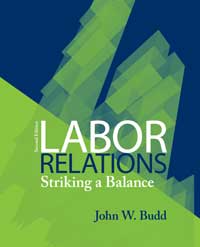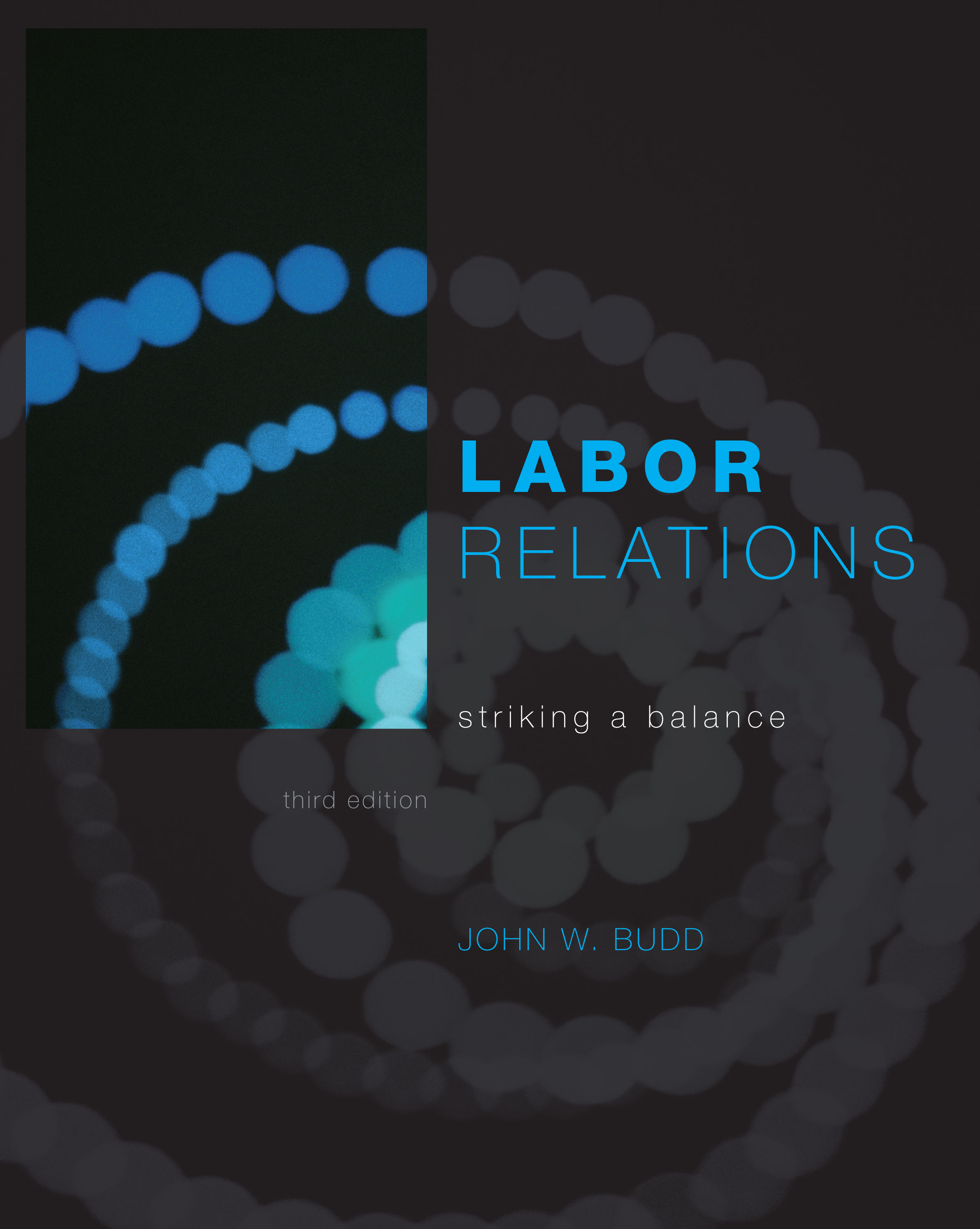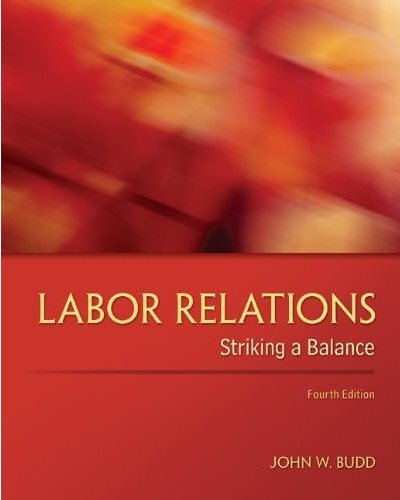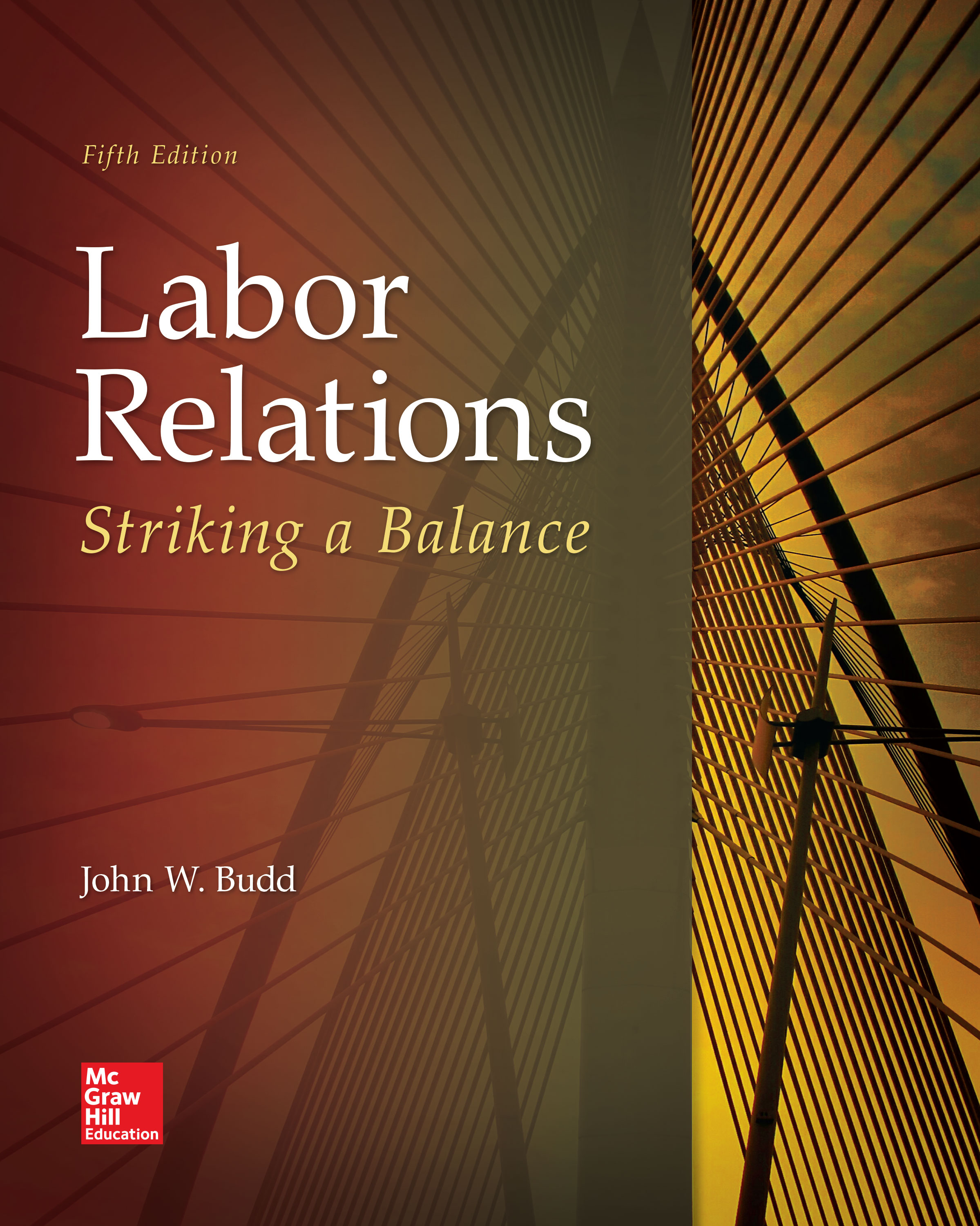|
Striking a Balance, 6th ed.
John W. Budd
Hardcover / Loose-Leaf / Digital Winner (1st ed.) -- 2005 "Texty" Textbook Excellence Award ! Updated 6th edition now available !
|
|
|
McGraw-Hill catalog page (includes link to access an Instructor's Preview Copy)
Instructions to access instructor's supplemental materials |
An award-winning labor relations textbook for undergraduates and graduates...
This textbook presents labor relations as a system for striking a balance between the employment relationship goals of efficiency, equity, and voice, and between the rights of labor and management. It is important to examine these goals to discover what motivates contemporary U.S. labor relations processes, and to evaluate whether these processes remain effective in the 21st century. What are the differing assumptions (such as whether labor markets are competitive) that underlie alternative mechanisms for achieving efficiency, equity, and voice? Why is a balance important? These questions provide the framework for analyzing the existing processes-especially organizing, bargaining, dispute resolution, and contract administration--as well as the major issues facing these processes--particularly the need for employee involvement, labor-management partnerships, and workplace flexibility in the context of globalization and financialization. Another recurring theme is that the current processes are one option for balancing workplace objectives and rights, but that this system is under fire from many directions. The book therefore concludes with chapters to promote reflection on the strengths and weaknesses of the current system and the possibilities for reform. This material includes a comparative examination of labor relations systems from other countries and a consideration of varied U.S. reform proposals that include changes in union and corporate behavior as well as public policies.
NEW TO THE SIXTH EDITION
The first five editions of Labor Relations: Striking a Balance were well received by instructors and students alike. In fact, the first edition was recognized with a Texty excellence award from the Textbook and Academic Authors Association for the best textbook in accounting, business, economics, and management in 2005. The sixth edition continues to refine and update rather than overhaul the successful approach of the earlier editions. The fifth edition added a nonunion application to each chapter, and now the sixth edition adds a new "practically speaking" feature throughout the text in which management, labor, and neutral labor relations professionals give practical words of wisdom connected to the concepts being presented. Chapter 10 has been significantly re-written under the new title "The Evolving Nature of Work," and includes new sections on unions in the fissured workplace, unions in the gig economy, and automation and the future of work. Elsewhere, a discussion of the landmark Janus decision has been incorporated, including a consideration of what this might mean for the future. Changes that the Trump NLRB has enacted or has signaled an intent to consider have also been incorporated, along with the labor rights issues embedded in the United States-Mexico-Canada Agreement that will replace NAFTA if it is ratified. Updated statistics, improved tables, and updated references appear throughout the text.
TABLE OF CONTENTS
Part I: Foundations
Chapter 1: Contemporary Labor Relations: Objectives, Practices, and Challenges
Chapter 2: Labor Unions: Good or Bad?
Part II: The U.S. New Deal Industrial Relations System
Chapter 3: Historical Development
Chapter 4: Labor Law
Chapter 5: Labor and Management: Strategies, Structures, and Constraints
Chapter 6: Union Organizing
Chapter 7: Bargaining
Chapter 8: Impasse, Strikes, and Dispute Resolution
Chapter 9 Contract Clauses and Their Administration
Part III: Issues for the 21st Century
Chapter 10: The Evolving Nature of Work
Chapter 11: Globalization and Financialization
Part IV: Reflection
Chapter 12: Comparative Labor Relations
Chapter 13: What Should Labor Relations Do?
Appendices
The National Labor Relations Act
Universal Declaration of Human Rights
A Sample NLRB Decision
Collective Bargaining Simulation: The Zinnia and Service Workers Local H-56
KEY FEATURES
| A Chinese translation published by China Machine Press is also available. The translation team included Professor Naiji Sun, Professor Guilan Yu, Professor Nan Yu, and Mi Yu, all of Jilin University. | 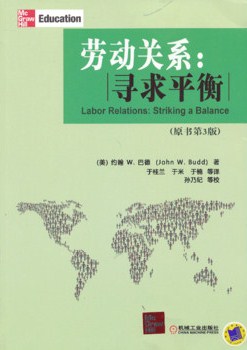 |
